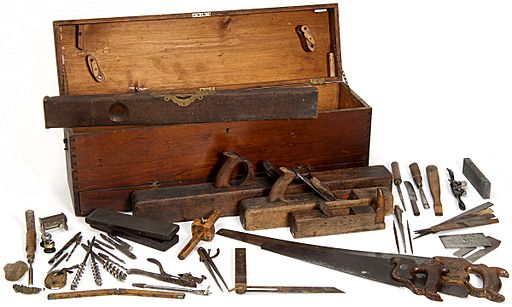Non-Electric Tools
Getting to know how to use non-electric tools could increase the quality of life, if not life itself, for you and your family in a post-apocalyptic scenario. In these situations, you have to assume that the electricity supply will have been knocked out, whether temporarily through a power cut or permanently through a nuclear EMP or solar CME. This will make all of your power tools and machines redundant, which will make long-term survival much harder.
Essential Tools

Once the initial shock and fall out of the TEOTWAWKI event has passed, it may be days, weeks or even months before any sort of civilization begins to emerge. You may find yourself suddenly having to live off the land not just in terms of food and water but also using local resources to generate heat and shelter.
With no electricity, the following non-electric tools will be essential additions to your tool shed:
- Axe — Beyond a source of clean drinking water, keeping yourself and your family warm is going to be the biggest challenge. Many people now rely solely on a central heating system, which in turn relies on electricity to burn gas for heat. Wood will become your new heat source and your old saw wont be able to cut down big enough trees to give you heat for long. An axe will be the most important of your non-electric tools as it allows you to fell large trees and create smaller logs to keep the fire burning.
- Canning tools — Without electricity, all of the stores will fail and many of the farmers that supply the stores will have been using electricity for decades to make food production quicker and easier. This leaves you in a tight spot: you may be able to find a lot of food but unless you can preserve it, you will need to go out every few days for more. Canning tools and a supply of empty jars will make your life easier as you will be able to save food for longer as well as ensuring that it does not become contaminated.
- Washboard — Another big threat to your survival in an apocalyptic event is dirt and disease. While it may be easy to rinse out open wounds, the amount of bacteria you may carry around in dirty clothes could still leave you open to infection. The lack of electricity means your washing machine is gone, so a washboard will become your new best friend. Make sure you buy soap ahead of time as well as some clothesline and clothes pegs to speed up the drying process.
Other Manually-Operated Hand Tools
- Handsaw
- Brace and bit
- Plane
- Wood-working tools
- Gardening tools
Tool Storage
Many non-electric tools still use metal parts such as saws and spades so youll need to think about long-term storage against rust. Covering them with engine oil will not give you the long lasting protection you need and runs the risk of being highly flammable. Get some bike chain oil, preferably one that sprays on for full coverage. Once you have coated the metal surfaces, put the tools in moisture proof sacks and keep them somewhere safe.
Other Essential Non-Electric Tools
Not all tools are in the garage or tool shed; kitchens have also become highly automated, relying totally on electricity. Therefore, it would be wise to acquire the following:
- Eggbeater
- Salad spinner
- Whisks
- Sharpening stone for knife sharpening
- Camping toaster
- Stove-top coffee percolator
- Meat grinder
- Grain mill
- Coffee grinder
- Pump-n-Seal, for vacuum-sealing dehydrated foods into glass jars
Blacksmithing
Over time, you will find that your non electric tools will slowly lose their edge and no Lowes or Home Depot will be available to sharpen them. Learning the basics of blacksmithing may be a sensible precaution, as you will also learn how to make replacement tool parts and new tools as well as being able to sharpen your current set. It can be hard to track down blacksmiths in the 21st century but when you find one near to your home, you will find that they are keen to pass on the skills of this dying art.
Return from Non-Electric Tools to Survival Equipment










New! Comments
Have your say about what you just read! Leave me a comment in the box below.